Welcome to the Luxury Tours to Southern China. During the trip, you will have a deeper understanding of Chinese culture and appreciate the charm of several cities in China. In Beijing, you will be astonished by the grand Forbidden City, stately Tian’anmen Square, and hutong with Chinese characteristics. In Kunming, you will have an opportunity to appreciate the fabulous terraced fields. Seeing this, you will be amazed by the intelligence of the local people. To further understand the folk culture of the Hani people, you will be taken to Jingkou Hani Ethnic Village where you can experience some folk activities and appreciate the beautiful landscape. In Jianshui, you will have a deep impression of Jianshui Ancient Town. Besides, you will have a chance to taste local snacks, such as flower cakes, Kunming Rice Noodles, Xizhou Baba, and so on. When arriving at Songzanlin Monastery, you will have a deeper understanding of Buddhism. The 13 days China Luxury Tours will give you an unforgettable experience. Wish you have fun in the Luxury Beijing Tours.

When arriving at the airport, you will be picked up by your tour guide who will then send you to a luxury hotel downtown. Then you can have a good rest.
Optional Activity:
Exhausted by the long time flight, you can experience the foot massage after dinner. Originating in China about 4,000 years ago, foot massage can prominently stimulate the reflex area on your foot of your body’s each part, accelerating the blood circulation. Besides, foot massage could allay tiredness, improve sleeping quality, and preserve health. I am sure after about 40-minute foot massage, you will feel very relaxed and comfortable.
In the morning, you will visit Tian’anmen Square that is located in the center of Beijing and built in 1285. There are five gates in the Tian’anmen Rostrum, the middle one of which is the largest. In the past, only emperors could pass through the middle gate. Other ministers can only walk through the smaller gate on the sides. Two marble pillars are standing on Tian’anmen Square. Each of them is carved with dragons and auspicious clouds. On the top of the Marble Pillar stands Hou (a beast existing in Chinese legends looks like a lion) facing south. It is said that the beast Hou supervises emperors’ every move. Noticing that the emperor has not come back to the royal palace for a long time when he goes outside for fun, Hou would call the emperor back quickly for government affairs. Hence, it is also a reminder for emperors not to hang out frequently and pay more attention to his country and people.
Your next destination is Forbidden City (Closed on Mondays), covering an area of 720,000 meters. As a residence for royal families in the Ming (1368-1644) and Qing (1636-1912) Dynasties, it is composed of more than 70 palaces and over 9,000 rooms. Surrounded by 10-meter-high walls, the Forbidden City is divided into the inner court and outer court. The center of the outer court includes the Hall of Supreme Harmony, the Hall of Central Harmony, and the Hall of Preserving Harmony, where some major and significant ceremonies are held. The inner court is where the emperor and his families live. From the Ming Dynasty and the Qing Dynasty, emperors went to court at the Gate of Supreme Harmony in the morning except for Emperor Kangxi who chose Qianqing Gate as the workplace. Before the emperor goes to the court, the throne, a screen, and a yellow desk are laid out. Then the emperor would sit behind the desk to listen to his ministers’ statements and make decisions. Usually, the meeting lasts two to three hours. Emperor Kangxi is the most diligent emperor, who almost went to court every day no matter it is in cold winter or sweltering summer.
After lunch, you will begin your luxury Hutong tour by rickshaw. Hutong is a sort of alley, and the narrowest Hutong in Beijing is less than 65 centimeters. There are many delicacies hidden in these historical hutongs, such as Yisan Bean Juice, Liqun Roast Duck Restaurant, and Fangzhuanchang Sauced Noodles Restaurant. Today, you will take a rickshaw and visit a quadrangle courtyard in Hutong. The owner of the quadrangle courtyard will tell you some stories about the dwelling. And you even have an opportunity to learn some Beijing dialect from the host.
After visiting Hutong, you will have lunch. Lunch will be famous Peking Roast Duck. In ancient times, the Roast Duck is a kind of delicacy that only the emperor can eat. Afterward, it was introduced to ordinary people.
After lunch, you will visit Shichahai. It is a historical block with the largest area and the most intact style preserved in Beijing. Covering a water area of 336,000 square meters, Shichahai is divided into three water areas including Qianhai, Houhai, and Xihai. Originally, it was surrounded by ten Buddhist temples. In Chinese, the pronunciation of “shi” corresponds to the number ten. “sha” means old temple. And “hai” means lake or sea. So, you can see how it got its name. There are plenty of tourist attractions here, such as Prince Gong Mansion, Prince Qing Mansion, the Bell and Drum Tower, Guanghua Temple, Silver Ingot Bridge and so on. Taking the Silver Ingot Bridge for example, the bridge got its name since it resembles a silver ingot. Standing on it you can appreciate the fabulous scenery of the West Mountain in a distance. On lunar July 15th every year, it is the Obon Festival. Local people will make lotus-shaped lanterns and float it on the river. They will stand on the Silver Ingot Bridge and looking the lanterns drifting away. They believed that the lanterns can carry their miss and deliver it to the deceased relatives.
Today’s last spot is Nanluoguxiang, 8 meters wide and 787 meters long in total, with a history of more than 740 years. Nanluoguxiang and its surrounding area were once the centers of the Yuan Dynasty (1271-1368). Later in the Ming and Qing Dynasties, it was a residential area of great wealth. After the fall of the Qing Dynasty, the prosperity of Nanluoguxiang came to an end slowly. Currently, it is rebuilt and developed as a tourist area and historical block. There are a variety of snack stores and Beijing souvenir shops. The Crab Dumplings in Soup here deserve a try! Its stuffing contains crab roe, crab meat, and chicken soup. Taking a small bite, you will taste the fresh mixture of crab and chicken soup. Most of the tourists will taste it when they come here. Besides, if you want to buy some souvenirs, you can buy silk, Chinese folding fans or chopsticks.
Then you will be transferred to the hotel.
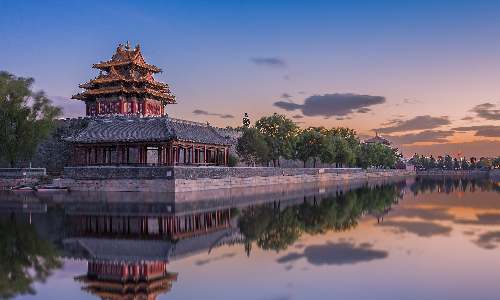
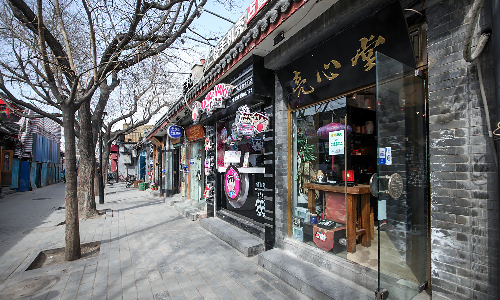
Today you will spend all day visiting Mutianyu Great Wall which will be an impressible place in your luxury Great Wall tour. You will be driven north to Mutianyu Great Wall from downtown Beijing. It will take about one and half hours to get there since it is over 70 kilometers away. Getting there, you will take the VIP shuttle bus to the helicopter landing site. There are two VIP lounges in the landing area for waiting, resting, and taking photos. To ensure a safe and comfortable sightseeing tour, there is a professional staff for security checks before taking the helicopter. Then you can enjoy the enchanting scenery of Great Wall on helicopter for about ten minutes. After the helicopter tour, you will take a VIP shuttle bus to the entrance of Mutianyu Great Wall Scenic Area. Then you can choose to take the round way cable car to continue your visit. As the longest section of Great Wall in China, Mutianyu Great Wall has a length of 5,400 meters. In Spring, Mutianyu Great Wall is surrounded by blooming flowers. In summer, it is covered with vibrant trees. Under the background of verdant cypress and pine waves, the Mutianyu Great Wall shows its strong vitality. In autumn, it is hidden among the red leaves. In winter, it is covered with snow which is more magnificent and grander than usual.
After the visit, you will be sent back to the hotel.
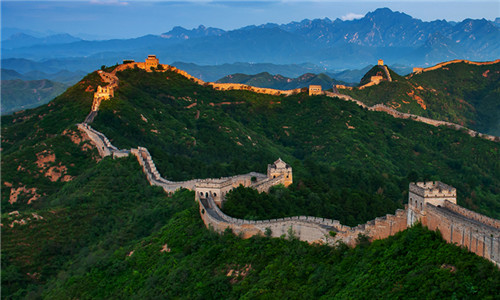

 Kunming
Kunming Yuanyang
Yuanyang In the morning, you will take the estimated flight CZ3901 08:55/12:30 to Kunming. After arrival, you will be picked up by the local guide. Reaching Kunming, your China luxury tour to Yunnan begins. After lunch, you will be driven south to Yuanyang from Kunming. It will take you about five hours since it is 334 kilometers away. The terraced fields reclaimed by the Hani people in Yuanyang vary with the topography of the mountain. With breathtaking views, the rice terrace is regarded as a spectacle of farming civilization.
You will have a good rest today. And tomorrow we will visit the rice terrace.
After breakfast, you will be taken to Duoyishu Rice Terrace, located 53 kilometers east of Yuanyang county, which is one of the distinguished tourist attractions to enjoy Hani Rice Terraces, the sea of clouds, sunrise, and mushroom-shaped houses. At an altitude of 1,900 meters, Duoyishu Rice Terrace includes nearly 666.67 hectares of terraced fields which is one of the core conservation areas declared as world cultural heritage. It looks like a giant bay dotted with dozens of Yi (a Chinese ethnic minority) villages and Hani (a Chinese ethnic minority) villages, enchanting and grand. Moreover, it is a paradise for shutterbugs to shoot sunrise. The terraced fields and villages are hidden in the clouds, constituting a splendid landscape. If you also want to witness the beautiful scenery, remember to set your alarm clock.
Then you will go to Tiger Mouth Pass for a visit. Located 50.5 kilometers south of Yuanyang county, Tiger Mouth Pass includes 400 hectares of terraced fields. The terraced fields are dotted in deep valleys. In autumn, the terraced fields are golden, looking like dragons lying on the mountains. When the terraced fields are filled with water, they look like thousands of pieces of glass embedded in the mountains. In March 1993, after Mr. Yang Rama, a famous director visited the here with his fiancée, they were so impressed with the fabulous scenery that they held a wedding ceremony in the terraced fields. In addition, he shot the scenic film "The Sculptor of mountains" here to praise Hani terraced fields, which was released at home and abroad, leading to a sensation in the world.
After lunch, you will experience the folk culture of Jingkou Hani Ethnic Village, located 35 kilometers away from Yuanyang county. It is a village where the traditional Hani buildings and living habits are preserved. There are two springs named White Dragon Spring and Longevity Spring respectively. It is said that people who are infertile drinking the water from White Dragon Spring will become fertile. People who drink the water from Longevity Spring will live longer. Besides, you will also see the traditional mushroom-shaped house here which is with strong ethnic building style.
Then you will be sent to the hotel.
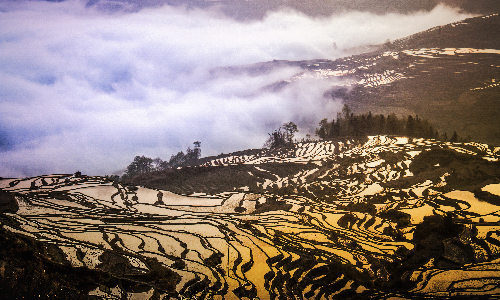

 Jianshui
Jianshui In the morning, you will be driven north to Jianshui from Yuanyang. It will take more than 2 hours since it is over 80 kilometers away from Yuanyang.
Arriving there, you will firstly visit Chaoyang Tower, built in 1389, whose architecture style is similar to Tian’anmen Rostrum in Beijing. Covering 414 square meters, it is 24.5 meters high with 3 floors. Underpinned by 48 giant wooden pillars, the tower has a history of more than 600 years. Having suffered so much from wars and chaos as well as 50 earthquakes, it remains intact. There is a huge bronze bell in the Ming Dynasty, 2 meters high and weighing 1.7 kilograms. When ringing the bell, the sound can be heard ten miles away. You can see a lot of calligraphy works written by some famous Chinese calligraphers in the tower which are also culture relics.
After lunch, you will go to Jianshui Ancient Town, known as the museum of ancient buildings. It was the earliest city built with earth by Nanzhao (a regime in Chinese history) in China. In the Ming Dynasty, it was extended with bricks. There are lots of famous sightseeing spots, such as Zhang Family Garden, Zhu Family Garden, and Swallow Cave. Taking Swallow Cave, for example, the cave gets its name from the fact that hundreds of thousands of white-waisted swallows’ nest on the cave walls. There are more than 30,000 square meters of woodland covered with lush trees outside the cave, which is also a habitat for many kinds of birds.
Then you will visit Zhu Family Garden, located in the middle of Jianxin Street, Jianshui Ancient Town. Covering an area of over 20,000 square meters, it was a homestead built by Zhu Weiqing and his brother in the Qing Dynasty. There are various small scenic spots, such as embroidery rooms for maidens, lotus pool, stage on the pool, and ancestral hall. In ancient times in Jianshui, a maiden was sent into the embroidery room when she was ten years old or so. Here, she had to learn needlework, embroidery, wifely submission and virtue as well as how to be a good wife and good mother in the future. Once a maiden was sent into an embroidery room, she was not allowed to go out until she got married. And her father would appoint a maid to look after her. Hence, you can feel that the social status of a woman here in ancient China is extremely low.
Then you will visit Confucius Temple, built in 1285. Covering an area of 76,000 square meters, it got 50 times of extension. Its doors are carved birds and beasts which are very delicate. There are many historical buildings but another thing you cannot miss is the wooden carving here. In front of the Dacheng Palace, there are many doors among which 6 doors are carved with dragons. The rest of the doors are carved with Chinese traditional propitious pictures such as magpies playing on the wintersweets, three rams bringing bliss, sunrise, and bamboos, demonstrating the superb skills of ancient woodcarvers.
After that, you will be sent to the hotel.
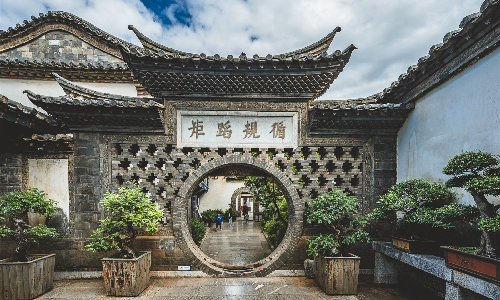
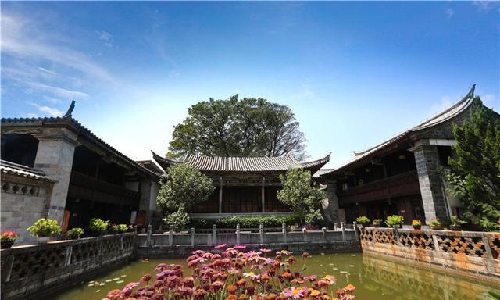
 Kunming
Kunming Dali
Dali After breakfast, you will be driven north to Kunming from Jianshui, which will take about 2 hours since it is 174 kilometers away from Kunming. Upon Kunming, you will be transferred to the train station where you are going to take the estimated train G8685 10:12/12:37 to Dali. When you reach Dali, you will find a guide waiting for you at the train station with your name sign. Then you will be taken to a restaurant to enjoy your lunch.
In the afternoon, you will pay a visit to the Three Pagodas of the Chongsheng Temple composed of Qianxun Pagoda and two small pagodas. Qianxun Pagoda is 69.13 meters high, and the other two pagodas are 42.17 meters high. The reason why the locals built the Three Pagodas in the Chongsheng Temple is that the place suffered a lot from floods in ancient times. In ancient China, people considered that the dragon can bring floods. Thus, the locals decided to build the Three Pagodas in the Chongsheng Temple to drive away the dragon. In front of the Qianxun Pagoda is a screen wall where says four characters, Yong Zhen Shan Chuan. In Chinese, the four words mean that the place will be protected by these three pagodas forever. Moreover, the Chongsheng Temple is also an important temple. Dali belonged to Nanzhao Kingdom in the past. The emperors of Nanzhao extremely worshiped Buddhism. Nine emperors of Nanzhao became monks in the Chongsheng Temple. Hence, the Chongsheng Temple is also a royal temple.
Then you will go to Dali Old Town. Built in 1382, it covers an area of 3 square kilometers. There are many scenic spots, such as South Gate, Wuhua Tower, Honglongjing Street, and so on. Taking Honglongjing Street, for example, the street gets its name from a well called Honglongjing, bearing a meaning of a well-protected by red dragons. In Chinese, “hong” refers to red; “long” means dragon; “jing” means water well. It is said that there was a young man who was very filial to his ill mother, but he found no way to cure his mother. One day, he dreamed that an old man told him to find a cabbage-shaped jade that could cure his sick mother. But the cabbage-shaped jade was guarded by four red dragons, so the young man must move the dragons by his sincerity. Later, the young man set off to find the cabbage-shaped jade with the old man’s instruction. The young man told the reason to the four dragons and the dragons were touched by his filial piety and gifted him the cabbage-shaped jade. Finally, the young man’s mother recovered. This is the story about Honglongjing Street. Furthermore, there are 3 time-honored restaurants that worth a visit, including Meizijingjiujia, Taibailou, and Zaihuishou. The plum wine in Meizijingjiujia deserves a try. It is cooked with plum and rice wine. You can taste the fragrance of plum and the strong flavor of rice wine. In Taibailou, you can watch the local performance while enjoying the local tea. In Zaihuishou, you can taste the authentic Yunnan cuisine.
Then you will be sent back to the hotel.
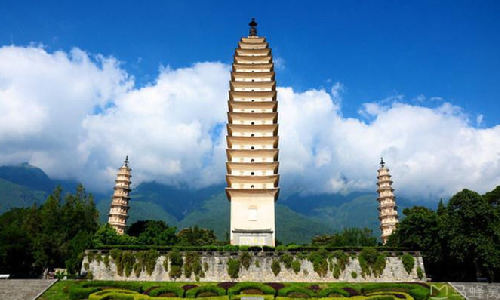
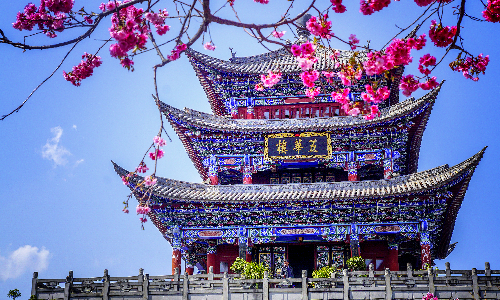
 Lijiang
Lijiang In the morning, you will visit Erhai Lake, covering 256.5 square kilometers. It looks like an ear. Reaching Erhai Lake, you will take Erhai Lake Cruise to appreciate the enchanting scenery. The mountains surrounding the Erhai Lake are Cangshan Mountains. It is said that Cangshan Mountains are transformed from a warrior and Erhai Lake is his girlfriend.
After lunch, you will go to Xizhou Town for a visit. Located to the west of Erhai Lake, it is a gathering place of Bai (a Chinese ethnic minority) people. Hence, you can see various dwellings with Bai nationality style. There are a variety of specialties in Xizhou Town, such as Xizhou Baba and Tuocha. Xizhou Baba is a sort of scone made of wheat flour, having sweet and salty flavors. After brushing with lard, it is baked in an oven until it becomes crispy. It is the most popular food in Xizhou Town.
Later, you will be transferred to the train station to take the estimated train D8131 18:17/19:54 to Lijiang. After arrival, you will begin your luxury Lijiang tour.
Your hotel will be near the Lijiang Ancient Town. So if you are free in the evening, you can go around the ancient city by yourself. Built in the late 13th century, there are numerous bridges in Lijiang Ancient Town. When it comes to the landmark of Lijiang Ancient Town, it must be Large Water Wheels which were originally used as the agricultural tool for irrigation in ancient times. Now, the Large Water Wheels have become a tourist attraction for photographing. Besides, you must taste the flower cake in Lijiang Ancient Town, another specialty. The stuffing of the flower cake is made of petals of the rose, chrysanthemum, and yulan. It tastes sweet and has a fragrance of flowers.
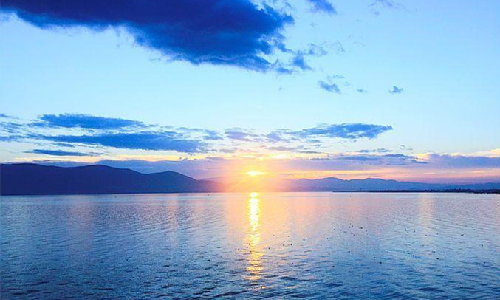
In the morning, you will visit Jade Dragon Snow Mountain. It consists of 13 snow-covered mountains, looking like a flying giant dragon in the clouds from a distance. You will visit Spruce Meadow by cable car. Here, you can appreciate the fabulous landscape of Jade Dragon Snow Mountain and virgin forest. If you happen to meet the local festival, you may watch the dance and song performance of Naxi people here. Down from the mountain, you will visit Blue Moon Valley which is renowned for the enchanting scenery of snow mountains and blue water. It got this name because its crescent shape. It also named White Water Lake because when it rains, the white sand in the bottom of the lake will roll and the whole lake will look white.
After lunch, you will go to Baisha Village to see Baisha Mural Paintings with a history of more than 300 years. There is a wide range of themes involved in Baisha Mural Paintings, such as running horses, blossom lotuses, forests, religious activities, and so on.
Then you will be driven to Shuhe Ancient Town, located at the foot of mountains. There are various scenic spots here, such as Qinglong Bridge, Sifang Street, Dragon Pool, and so on. Built in the Ming Dynasty, Qinglong Bridge has a history of more than 400 years. Standing on the bridge, you can appreciate the beautiful scenery of Jubao Mountain, the clear lake, and the folk residences.
After that, you will be transferred back to your hotel.

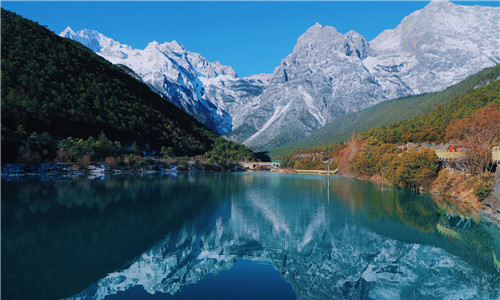
 Shangri-La
Shangri-La After breakfast, you will be driven north to Shangri-la which is over 180 kilometers away from Lijiang. It will take you about 3 hours. On the way, you will firstly visit The First Bend of the Yangtze River. It is 55 kilometers away from Lijiang, and you will spend about 1 hour to arrive there. At an altitude of 1,850 meters, the Yangtze River gushes from the Qinghai-Tibet Plateau to Yunnan Province. Together with the Lancang River and Nu Rivers, it runs through deep valleys, forming a magnificent landscape of "three rivers flowing together". It said that the Jinsha River, Nu River, and the Lancang River who were siblings traveled together. However, they were in dispute halfway. Nu River and the Lancang River went south stubbornly, leaving Jinsha River who was determined to find love in the east alone. Afterward, the Jinsha River bid farewell to her elder sisters and went east. The place where she turned around turned into The First Bend of the Yangtze River.
Next, you will continue to be driven north to Tiger Leaping Gorge from The First Bend of the Yangtze River. It will take about 1 hour (54KM) to get there. Tiger Leaping Gorge is known as a precipitous canyon, one of the deepest canyons in China. On both sides of the gorge stand mountains with an altitude of 1,800 meters. On the east stands Jade Dragon Snow Mountain. On the west stands Haba Snow Mountain. The water in the gorge is turbulent. So, it is the first choice for many adventure lowers.
Later, you will be driven north to Shangri-la.


After breakfast, you will visit Songzanlin Monastery which is the largest Tibetan Buddhist monastery in Yunnan Province. It looks like an old castle with Tibetan architectural features. The palace is grand and beautiful with colorful murals inside which depict historical and Buddhist stories. In Tibetan culture, celestial burial is considered as a sacred ceremony. The celestial burial is a traditional funeral where the deceased’s corpse is carried to a designated place for vultures, crows and other animals to eat. On the opposite of Songzanlin Monastery is a place for celestial burial where gathers numerous crows which would devour the deceased’s body. The Tibetan regard the crow as a sacred creature. Only the body which is eaten by crows the soul will go to paradise. Besides, crows will feed their old parents which cannot fly, which makes them different from other birds. Such regurgitation-feeding is similar to the reciprocity concept possessed by Tibetan, so they respect crows.
After lunch, you will pay a visit to Potatso National Park, covering 1313 square kilometers. As a conservation area, the primitive ecological environment is well preserved. Thus, there are abundant animal resources, forest resources, wetlands, and lakes. It is said that there is a sort of rare fish named Hemibarbus Labeo fish living in Bita Lake. It is a palaeobios survived from the Quaternary glacial period, whose meat is tender and fresh. But there is no one in the Tibet area eating such fish since the Tibetans pursue water burial. They believe that such fish would eat the deceased’s body, so they don’t eat it.
After visiting the Potatso National Park, you will be taken to a local Tibetan Family for visit. You will talk with the owner of the Tibetan Family who will tell you some customs and activities here. What’s more, you can taste a local special snack, butter tea made of tea and butter.
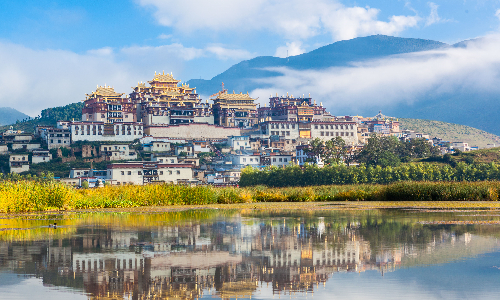
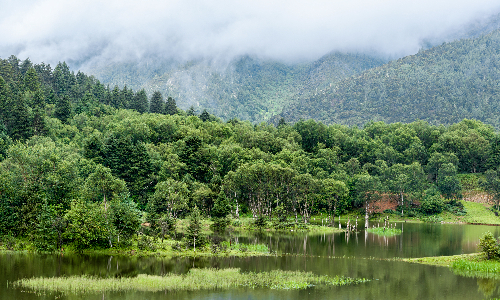
 Kunming
Kunming Shanghai
Shanghai After breakfast, your guide will assist you with check-out. Then you will be sent to the airport where you are going to take the estimated flight MU5932 08:50/10:05 to Kunming. Upon Kunming, you will be picked up by your guide to visit Stone Forest, covering 350 square kilometers. About 300 million years ago, it was an ocean. After a long geological evolution, extremely precious geological relics have been formed, covering many karst landforms on the earth. There is a story about the Stone Forest. There was a girl named Ashima who was compelled to marry the son of the moneybag though she had been engaged in her childhood sweetheart before. Hearing the news, her sweetheart called A Hei came to rescue Ashima. Eventually, he rescued Ashima and took her home. On the way home, it suddenly rained heavily. Later, the mountain flood came down and the water got deeper and deeper. They got separated and neither could find the other. When they found each other, they lost their way. When they were anxious, a little buzzing bee flew towards them. They followed the bee entering the Stone Forest. Ashima was exhausted, so she wanted to hold a rock to rest. Surprisingly, her hand was stuck to the rock. Hence, she asked A Hei to find a white pig and a white rooster as a sacrifice to the God of mountains, then she would be rescued. But A Hei could not find a white pig and a white rooster, so he painted a black pig and rooster white with mud. In this way, he could deceive the God of mountains with these things. On the way to rescue Ashima with the tributes, he was exhausted and wanted to have a rest. He gradually fell asleep. When he was awake, he found that the mud painted on the pig and rooster was washed out. And the God of mountains would never receive such tributes. Finally, Ashima couldn’t be rescued and turned into a rock in the Stone Forest.
After the visit to Stone Forest, you will be taken to the airport where you are going to take the estimated flight ZH1938 19:40/23:00 to Shanghai. Upon Shanghai, you will be sent to a hotel for rest.
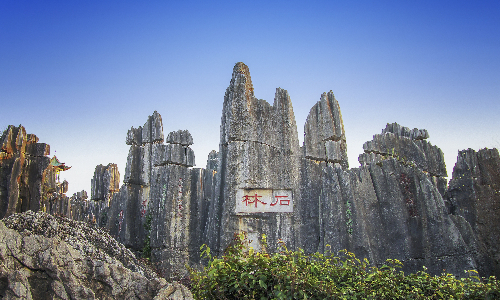
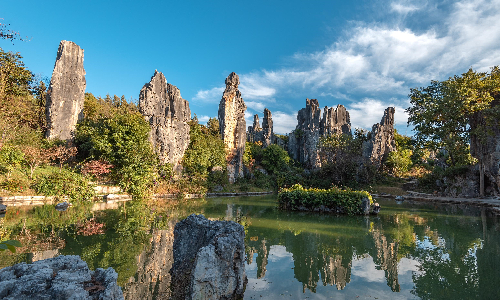
After breakfast, you will go to Jade Buddha Temple, which is known for the Jade Buddha statues enshrined in the temple. Although it is situated at the bustling downtown, it is called a pure land downtown. Covering 8,856 square meters, it is a palace with architectural features of the Song Dynasty (960-1279). There is a strange bell in the temple. Innumerable Buddhists come here to strike the bell to express their respect. However, the people who do not worship earnestly may strike the bell with great strength, the bell will not ring.
Then you will visit Yu Garden (Closed on Mondays) which is a private garden originally in the Ming Dynasty. There are many scenic spots here, like Exquisite Jade Rock, Nine-dragon Pond, Wanhua Hall, and so on. When it mentions Exquisite Jade Rock, there is a story about it. Exquisite Jade Rock was originally a gift presented to Emperor Huizong of the Song Dynasty. But it is lost on the way to the royal palace. Many years later, it became a plaything of local officials and gentry. Then it was gifted to the owner of Yu Garden as dowry by a person whose daughter would marry a brother of the owner of Yu Garden.
After lunch, you will go to Shanghai Tower whose exterior spirals upward. Some said that such an appearance could reduce wind resistance. It also looks like a dragon flying upward or a guitar pick. The sightseeing hall is on the 118th floor. You will overlook the whole Shanghai here.
Finally, you will be transferred to the airport. It is time to say goodbye. Wish you have an unforgettable experience.
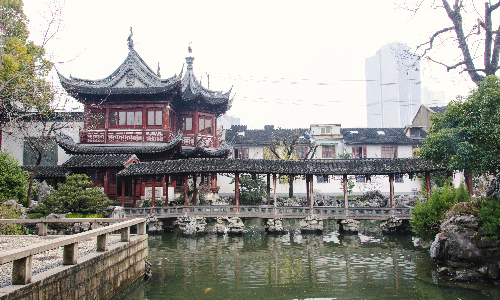
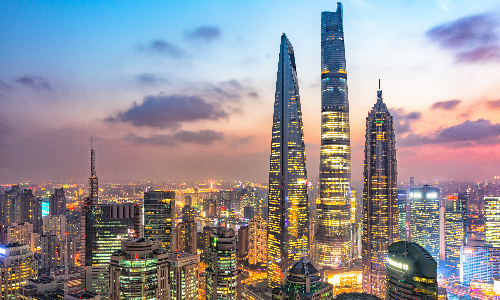
Author: Amelia
Proofreader: Besty
| City | Five Star hotel list | Four Star hotel list |
|---|---|---|
| Beijing | Sunworld Dynasty Hotel Beijing Wangfujing | Sunworld Hotel Wangfujing |
| Jianshui | Lin'an Hotel | Hanlinyuan Hotel |
| Yuanyang | Oness Resort Yuanyang Terrace | Oness Resort Yuanyang Terrace |
| Dali | The One Hotels & Resorts | Landscape Hotel |
| Lijiang | Wonderport International Hotel | Lijiang Wangfu Hotel |
| Shangri-La | Paradise Hotel | Ri Yue Xing Cheng Hotel |
| Shanghai | Ocean Hotel Shanghai | Courtyard by Marriott Shanghai Central |
 |
![]() About your child or infant, please contact us for a discounted price.
About your child or infant, please contact us for a discounted price.



We started with a few days in Beijing & ended in Shanghai, from where we visited the Forbidden City and Great Wall. In between we visited Terra Cotta Warriors Museum, Panda Base, Shanghai Disneyland.

We had a wonderful holiday in China which will remain long in the memory. China is a breathtakingly beautiful country full of splendid temples and palaces, mountains and rivers, peaceful rural scenes and bustling shopping streets.
 QUICK ENQUIRY
QUICK ENQUIRY